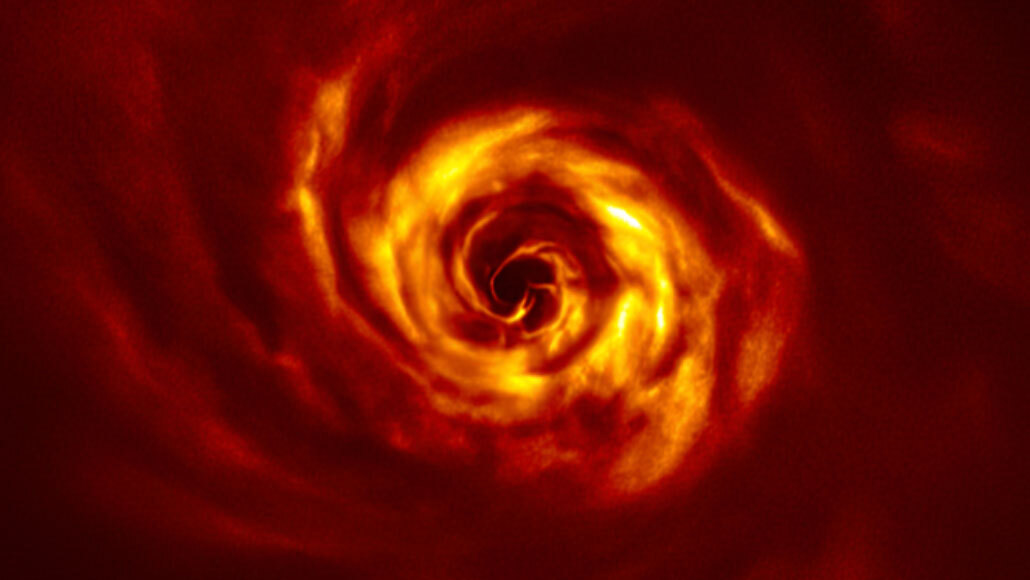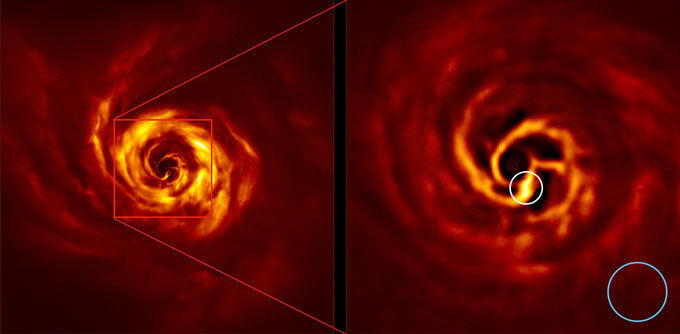Stunning images of swirling gas and dust may show a planet forming
A small, tantalizing twist in a spiral around a young star hints at where an exoplanet grows

This infrared image, taken by the Very Large Telescope in Chile, shows a giant spiral of planet-forming gas and dust around the young star AB Aurigae, about 520 light-years away in the constellation Auriga. The star itself is blocked out in the center of the image.
A. Boccaletti et al/Astronomy & Astrophysics 2020, ESO








